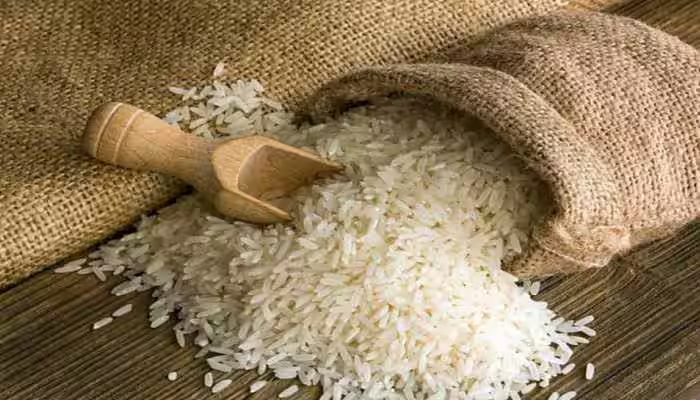Tags
India releases genome-edited rice, draws both applause and alarm
Arathi Menon.

- India has released two genome-edited rice varieties aimed at enhancing yield and resilience against environmental stresses.
- Both varieties were developed using a genome editing technique, which allows for precise modifications in the plant’s DNA without introducing foreign genes.
- While it is largely considered a positive step towards food security, concerns have been raised about the biosafety of these varieties.
In a significant stride towards bolstering food security amid escalating climate challenges, researchers at the Indian Agricultural Research Institute (IARI) and the Indian Institute of Rice Research (IIRR), both operating under the Indian Council of Agricultural Research (ICAR), have developed two innovative genome-edited rice varieties, named DRR Dhan 100 (Kamala) and Pusa DST Rice 1. These varieties aim to enhance yield and resilience against environmental stresses.
Developed by ICAR-IIRR in Hyderabad, DRR Dhan 100 or Kamala is based on the popular Samba Mahsuri (BPT-5204) and exhibits high yield potential along with improved drought and salinity resistance. Pusa DST Rice 1 is developed by ICAR-IARI in New Delhi from Cotton Dora Sannalu (MTU 1010) and is engineered for enhanced DST or drought and salt tolerance.
Both varieties were developed using the CRISPR-Cas9 genome editing technique, which allows for precise modifications in the plant’s DNA without introducing foreign genes. This, according to the scientists, is a very different method from genetic modification of the plant. Genome editing accelerates the breeding process and enables the development of crops with desired traits more efficiently.
Genome editing vs genetic modification
While both genome editing and genetic modification (GM) involve altering an organism’s genetic material, they differ fundamentally in approach and outcome. Genome editing uses specific tools to make targeted changes to the organism’s own DNA without introducing genes from other species. In contrast, genetic modification typically involves inserting foreign genes into an organism’s genome, often resulting in transgenic organisms.
Viswanathan C., Joint Director (Research) at the Indian Agricultural Research Institute, explains, “In genome editing, mutations are induced at specific sites where change is needed. These are internal and guided changes — a modern, targeted way to induce genetic mutations that also occur in nature, but with precision for specific outcomes.” Genetic modification, on the other hand, can result in unintended genetic changes and has been subject to stricter regulatory scrutiny.

Scientists have used Site-Directed Nuclease 1 and Site-Directed Nuclease 2 (SDN-1 and SDN-2) genome editing techniques to develop the seeds. Vishwanathan highlights that genome editing in rice is being pursued to address agricultural challenges such as low yields, drought, and soil salinity, which are increasingly prevalent due to climate change.
For instance, Pusa DST Rice 1 and DRR Dhan 100 (Kamala) were developed to tolerate harsh conditions such as drought and saline soils, which are common in many Indian farming regions. Kamala, derived from the popular Samba Mahsuri rice, also has improved grain numbers and reduced environmental impact, according to the scientists.
Concerns around biosafety
The release of these genome-edited rice varieties has garnered attention from various stakeholders in the agricultural sector. While many experts view this development as a positive step towards sustainable agriculture, some have raised concerns about the long-term implications and regulatory oversight of genome editing technologies.
The Coalition for GM-free India, in a press conference held in Bengaluru, put forward the concerns around the safety of genome editing of crops such as rice. They alleged that both SDN-1 and SDN-2 techniques used for the rice varieties are illegal and unsafe. Kavitha Kuruganti, a member of the coalition says, “Published studies such as Sukumar Biswas et al. in their paper say that SDN-1 technology, using CRISPR/Cas9 system is not precise in rice. Early and accurate molecular characterisation and screening must be carried out for many generations before the edited rice varieties are handed over to the farmers.”
In a rebuttal, ICAR scientists responded to these allegations saying that genome editing techniques, (SDN-1/SDN-2) are comparable to natural or chemical-induced mutations used safely for more than 75 years. They explain that these techniques require specific tests to confirm absence of foreign DNA. “More than 30 agriculture-based countries have exempted SDN1 and SDN2 genome editing from stringent biosafety regulations. India too joined the progressive nations and notified the exemption of SDN1 and SDN2 genome edited plants in 2022,” the rebuttal sourced by Mongabay India says.
While Kurnganti questions the need for a better yielding paddy, considering India is one of the largest rice producers in the world, second only to China, and the country could do better with better distribution of paddy produced, Vishwanathan says that rice plays a central role in the country’s food security and cannot be overlooked. He adds that similar research is ongoing in millets and other crops as well.
Banner image: A view of paddy fields. Representative image by Shagil Kannur via Wikimedia Commons (CC BY-SA 4.0).
https://india.mongabay.com/2025/06/india-releases-genome-edited-rice-draws-both-applause-and-alarm/Published Date: June 3, 2025






